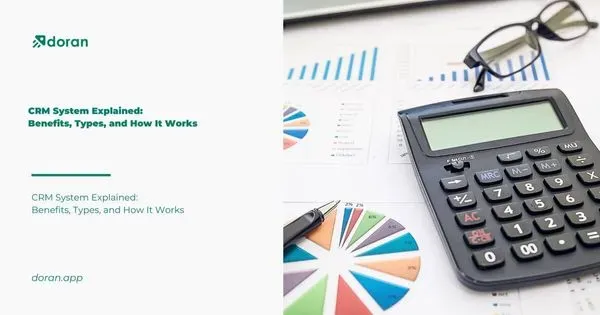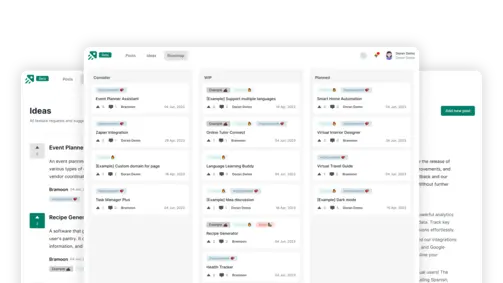The Power of NPS Surveys: Unlocking Customer Loyalty
Create changelog and product roadmap for your product
Explore nowTable of contents 7 min
NPS (Net Promoter Score) surveys have emerged as a cornerstone in measuring customer loyalty and satisfaction. “How probable are you to recommend us to a friend or colleague?” is the basic NPS inquiry.—and the grading system that followed, making it a well-liked indicator for companies looking to comprehend customer advocacy. Delving into the intricacies of NPS surveys is pivotal for companies seeking actionable insights and striving for customer-centric growth.
What Exactly is the Net Promoter Score NPS Survey?

Net Promoter Score, or NPS for short, is a statistic that is utilized in customer experience initiatives. NPS calculates a customer’s level of loyalty to a business. A higher score is preferred. NPS scores are calculated using a single survey question and provided as a number between -100 and +100.
The gold standard for measuring customer experience is frequently cited as NPS®. Originally created in 2003 by Bain & Company, millions of organizations use it today to monitor and measure their consumers’ perceptions of them. NPS scores are used to categorize input into positive and negative categories.
One simple question, “To what extent would you suggest [Organisation X/Product Y/Service Z] to a friend or colleague?” is used to measure customer perception.
Consumers rate their responses with a number ranging from 0 (which means not at all probable) to 10 (which means extremely likely). An NPS score is calculated by grouping customers into one of three categories:
-
Promoters are usually devoted and passionate consumers who score a 9 or 10.
-
Passives provide a 7 or 8 for their response. Though not content enough to qualify as promoters, they are pleased with your service.
-
Detractors rate the response on a scale from 0 to 6. These are dissatisfied consumers who are unlikely to make another purchase from you and might even put off future customers.
How is the Net Promoter Score Calculated?
Your final NPS score is easy to determine: just deduct the number of Detractors from the percentage of Promoters.
For instance, your NPS score might be 70-10 = 60 if 10% of respondents are Detractors, 20% are Passives, and 70% are Promoters.
What is the Difference between Transactional vs relational NPS Surveys?
Relational NPS surveys are distributed on a regular basis (quarterly or yearly). The objective is to gauge your clients’ general sentiments about your business on a regular basis. This information can be utilized as a benchmark for business success and to assess the state of customers year over year. Transactional NPS surveys are distributed following a customer’s interaction with your business (such as a purchase or phone contact for support). It is used to give input on a narrow range of topics and gain a detailed understanding of client satisfaction. Utilizing both kinds of NPS surveys can help you better understand your customers on both a large and micro level, and even increase your NPS survey response rate.
Find out more: Boost Customer Satisfaction with Feedback Management
What can be Quantified with NPS?
Almost anything may be measured with an NPS score. You are able to monitor scores for specific items, stores, websites, and even employees in addition to knowing your company’s total NPS. Because you can compare your performance to that of your competitors by using industry NPS benchmarks, you should think about incorporating NPS into your marketing or customer experience plan. It will help you gain a deeper comprehension of your target market’s behavior in response to social media advertisements, your product or service, and customer service agents. The objective is to attract devoted clients who, rather than just being buyers, become brand advocates.
Read more: How to Collect Customer Feedback Effectively
What is an NPS Survey? Guide on Creating NPS Surveys
NPS surveys are really simple to create—in fact, using one of our free templates does the work for you—but when choosing how to administer them, you need to consider how the data will be used in the long run. You could utilize survey software, but since it only measures one statistic, it will limit your capacity to act on the data. We suggest using a customer experience management platform or an NPS program to obtain a comprehensive insight of your customers. Platforms for managing customer experiences let you monitor every interaction your business has with clients, both present and potential. The NPS data can then be used to determine which touchpoints have higher and lower NPS values. Below is a list of questions from our NPS survey methodology guide to include in your NPS surveys.
Demographic Questions
It is usual to begin NPS surveys with inquiries on demographics such as age, gender, and income. During your research and analysis, you can use this answer data to help with segmentation. If there is no reason for demographic questions in the survey, try to remove them. If there is, you can obtain the information from data you already have in other systems, such as a customer database or CRM. Recall that fewer survey questions are preferable.
The Net Promoter Score Question

This is the primary question that we previously discussed, and it will serve as the main indicator of your score. In order to facilitate data analysis and follow up with respondents to address their feedback, additional questions are included.
Reason Behind your Score

In your NPS surveys, you ask the customer in this open-ended inquiry what the main justification was for their numerical response in the preceding question. This will assist you in identifying the motivations behind supporters and critics in your answers. It can take a while to go through the open text feedback, so think about utilizing a text analysis program like Text iQ.
How can it be Done to Make your Experience Better?

You ask the respondent to provide suggestions in this question about how to make their experience better. If you want to use your responses for customer ticketing and close loop follow-up, this can be useful. If you already know the solution, you’ll be well on your way to working directly with the customer to resolve the problem. Remember that not every situation will require the “reason for your score” and “how could we improve” questions, as the answers to both questions are frequently the same. For instance, “shorten wait times” is likely the best approach to improve the experience if the reason for the low rating was “long call waiting times.”
Ask for Permission to Contact the Customer Again

Asking the survey participant if you can follow up with them after your NPS surveys if necessary is a good practice. Not everyone will want to discuss their problem with someone. You might not have the customer’s phone number or email address, depending on how your survey was distributed. If necessary, don’t forget to ask for it. As with the demographic question previously suggested, don’t ask for this information if you can obtain their contact details along with metadata from another source.
In conclusion, NPS surveys serve as a powerful indicator of customer loyalty and advocacy. Employing best practices in crafting, analyzing, and acting upon NPS survey results can drive improvements in products, services, and customer experiences, fostering long-term relationships and sustainable business growth.
What to not miss out on our blog
Gain insightful knowledge and invaluable experiences from dedicated experts.

CRM System Explained: Benefits, Types, and How It Works
Discover everything about CRM system. Learn the benefits and how a CRM system works to improve customer relationships and streamline business operations.

Are you ready? Start your free trial today.
Enhance communication, keep track of the progress, understand customers' insight and more by taking your first trial on Doran.
Sign up for free

